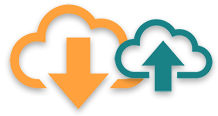
ITC Security Policy
for cloud services
Versioning
|
1.0
|
07.12.2015
|
Initial
|
|
1.1
|
27.10.2017
|
Translated to english
|
The ITC security policy is an intent to be compliant with
standards, requirements and recommendations from the following third parties:
- PCI - Payment Card
Industry standard
- SANS - System Administration,
Networking and Security institute
- Norsis -
Norsk senter for informasjonssikring
- NSM - Nasjonal sikkerhetsmyndighet
- IETF
- Internet Engineering Task Force
- RFC - Request For Comments
- ITU
- International Telecommunication Union
- ISO
- International Organization for Standardization
and general best practise.
Requirements for all
- Security in systems and
services must continuously be developed and maintained. Automated
maintenance cannot be executed by any lower security zone.
- All persons must have their
own account. Shared password between persons are not allowed.
- Passwords, any form of
software token or PKI capable of giving superuser access to any other
system or service are not to be permanently stored anywhere. Not even
encrypted. Shared secrets for two-step token generation are allowed on
employee devices in encrypted form, but only on non-jailbroken mobile
devices (phone/tablet).
- Only a few people as
possible should have access.
- Only employees can have
permanent superuser access.
- Communication between other
security zones must be encrypted.
- Any login allowing
superuser access must as a minimum require 2-step authentication and
auditing.
- Single-Sign-On, SSO, is not
allowed between different services. This means it is not permitted to
login with two-step authentication on the first service, and then to
another service without requiring re-authentication.
- Test of security systems
and procedures must be performed frequently.
- All systems and services
must be continuously monitored
- Machine-machine
authentication between different services that allow superuser access is
not permitted. This includes monitoring and maintenance systems.
- Direct communication to a
third party network in a high security zone is not permitted and must go
through a protected service in a lower zone.
- VPN/proxy-services that
allow access into a high security zone is not allowed unless every VPN
user have its unique IP-address with a restrictive firewall in front.
The VPN-service must fulfill the same security requirements and
security zone as the system or service it protects.
Requirements for applications
- An application is not
allowed to have access to processes of other services.
- An application is not
allowed to have access to files or data of other services.
- An application is not
allowed to have superuser access to the operating system or CPU ring 0,1
or 2.
- Trusted applications is
only allowed when all of the source code is available and the application
has been compiled from that source code.
Virtual servers and the hypervisor
- No VM is allowed by the
network switch to use other mac-addresses or IP-addresses than their own.
- Only employees shall be
granted superuser access, even temporarily.
- It is not allowed to give
the same VM access to different security zones.
- No VM is allowed to run as
superuser/root.
- No VM is allowed on process
level to have access to any other VM.
Physical network switches
- The switch must require
MAC-authentication towards the server port or be configured with a manuel
MAC-filter.
Requirements for routers / firewalls
- VMs and servers shall not
be allowed to use TCP/IP ports that are not in use.
Requirements for storage systems
- The storage system must be
behind a closed network only accessible to the required applications.
Management are only allowed for machines in the same security zone or
higher.
Requirements for physical security
- Equipment shall be locked
and have a access control.
- No third parties shall have
physical access to the equipment.

